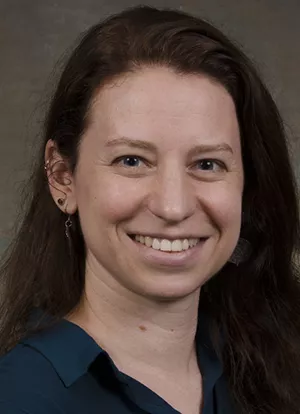Q&A with CDC Epidemic Intelligence Service Officer Heather Reese '07

As an epidemic intelligence service officer for the Centers for Disease Control and Prevention, Heather Reese ’07 was called upon in late January to investigate two of the first reported cases of COVID-19 in the U.S. Since then, she has been deployed to the CDC Emergency Operations Center, continuing work to slow the spread of the pandemic. Reese, who majored in biology and art at Swarthmore, recently took a brief break from her work on the front lines to discuss her role at the CDC, as well as the progress being made against the coronavirus.
First, how are you doing during this stressful time?
I’m staying home with my family as much as possible and taking the opportunity to call my parents and extended family much more frequently than pre-pandemic.
What is your primary role in the fight against COVID-19?
As an epidemic intelligence service officer at the CDC, I’ve been deployed wherever I was most needed to help with the response. For the last couple months this means I’ve been deployed to the Emergency Operations Center (EOC), which acts as the hub of any major public health response at CDC. Within the EOC I’m on the team that works on creating mathematical models to estimate the spread of disease within the U.S., to assess the possible effects of community mitigation strategies to reduce contact (like social distancing, school closures, teleworking), and to estimate the effects of the pandemic on health care systems. While no model is perfect, these models can help provide evidence for policy recommendations.
What went through your mind when you were first pulled into work on the pandemic?
I first knew I was being pulled off my usual work and into the COVID-19 response when I received a phone call late one January afternoon asking if I could be on a plane to Chicago that night. I was excited to be sent to the front lines, but focused on ensuring I could hit the ground running. The next day I was at the hospital that was treating the first patient in Chicago with COVID-19. There I joined an investigative team of state and local public health officials, as well as other colleagues from CDC.
What kind of progress is being made against the virus?
We’re learning more about SARS-CoV-2, the virus that causes COVID-19, every day. Our efforts are continuing on all fronts, including the epidemiology of the virus, medical countermeasures, and effective community mitigation strategies.
What more could/should Americans be doing to aid in easing the pandemic?
Everyone can help in the fight against COVID-19. Staying at home as much as possible, maintaining physical distance when you must leave the house, and seeking health care from home when you feel ill (call your medical provider first!) are all key in reducing the impact of COVID-19 in our communities.
When can we expect life to return to normal?
This is a really good question, and depends on many different factors, including the trend in prevalence of COVID-19, and the continued feasibility of personal and community preventive measures. Local transmission of COVID-19, rather than national prevalence, will likely be one of the best indicators for individual communities.
What drew you to study infectious diseases, and how long have you been with the CDC?
I’ve always loved the biological sciences, and a career in public health allowed me to practically apply my science background through an applied health and population-focused lens. After working in global public health as a Ph.D. student and postdoc, I joined CDC as an epidemic intelligence service officer in 2018.
What were you working on before the COVID-19 crisis hit?
Before the pandemic reached the U.S., I worked on vaccine-preventable bacterial diseases. Specifically, increasing local capacity to respond to outbreaks of meningococcal meningitis in Africa’s meningitis belt countries, and characterizing spatiotemporal trends in pertussis across the U.S.
How did Swarthmore prepare you for working in a crisis?
Swarthmore instilled a sense of social responsibility that helped lead me to a career in public health.



